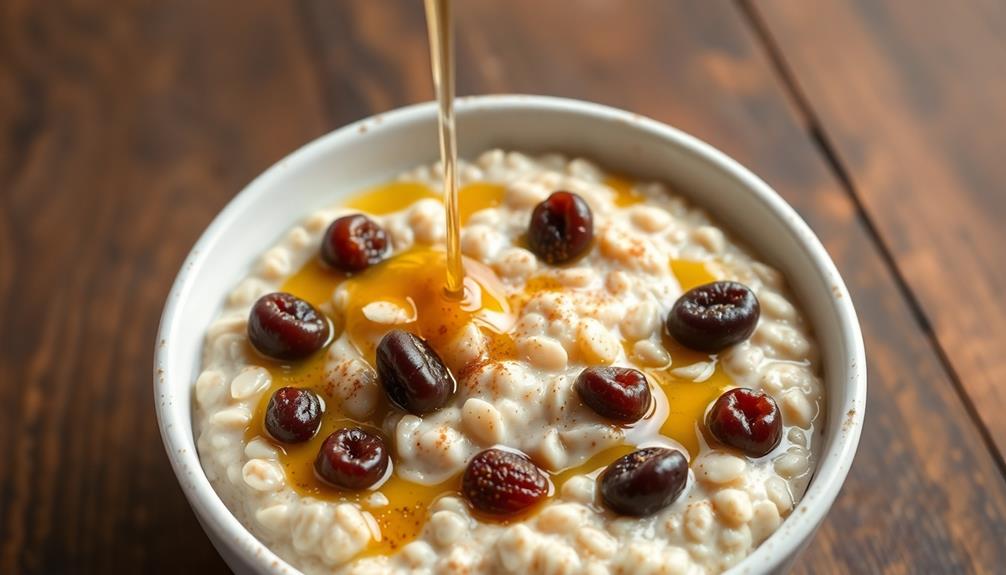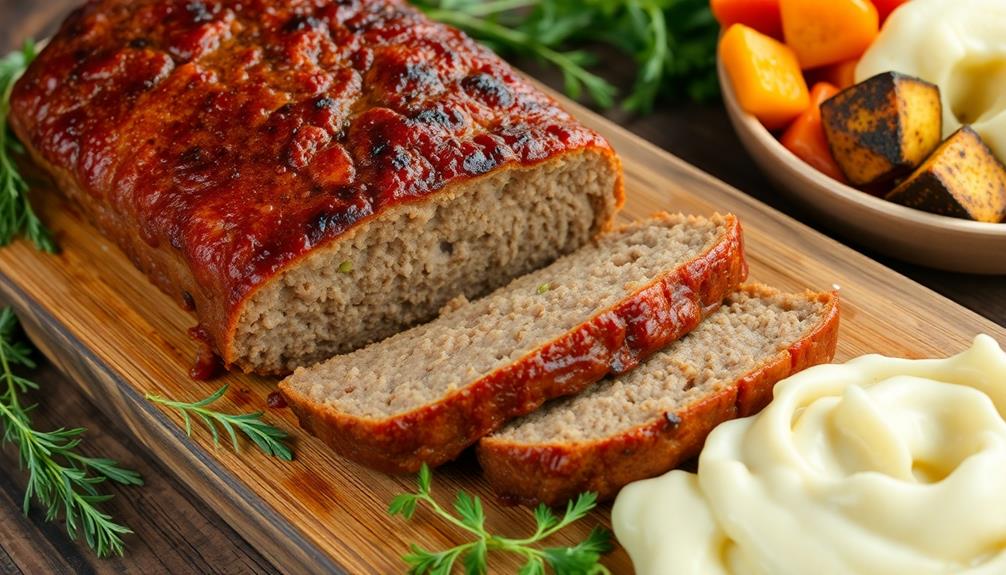Creamy homemade oatmeal is a satisfying and nourishing breakfast that's easy to make. Start by bringing water and a pinch of salt to a boil, then stir in rolled oats. Simmer the oats until they reach your desired creamy consistency, adding more liquid as needed. Top the oatmeal with fresh fruit, nuts, honey, or spices to customize the flavors. This hearty meal is packed with fiber, protein, and essential nutrients to fuel your day. With a little preparation, you can enjoy a comforting and indulgent breakfast that promotes overall wellness – and you'll discover even more tasty ways to elevate your oatmeal.
Key Takeaways
- Creamy homemade oatmeal is a nourishing breakfast option that yields a smooth, velvety texture and is rich in fiber, protein, vitamins, and minerals.
- To achieve the creamy texture, use rolled or steel-cut oats and simmer them with milk or water, adjusting cooking times for desired consistency.
- Customizable with a variety of toppings like fresh fruit, nuts, nut butters, and spices to suit individual taste preferences.
- Simmering the oats and periodically stirring helps prevent sticking and ensures even cooking for the perfect texture.
- Homemade oatmeal is a versatile and convenient breakfast option that can be enjoyed warm or cold, and is suitable for various dietary needs.
History
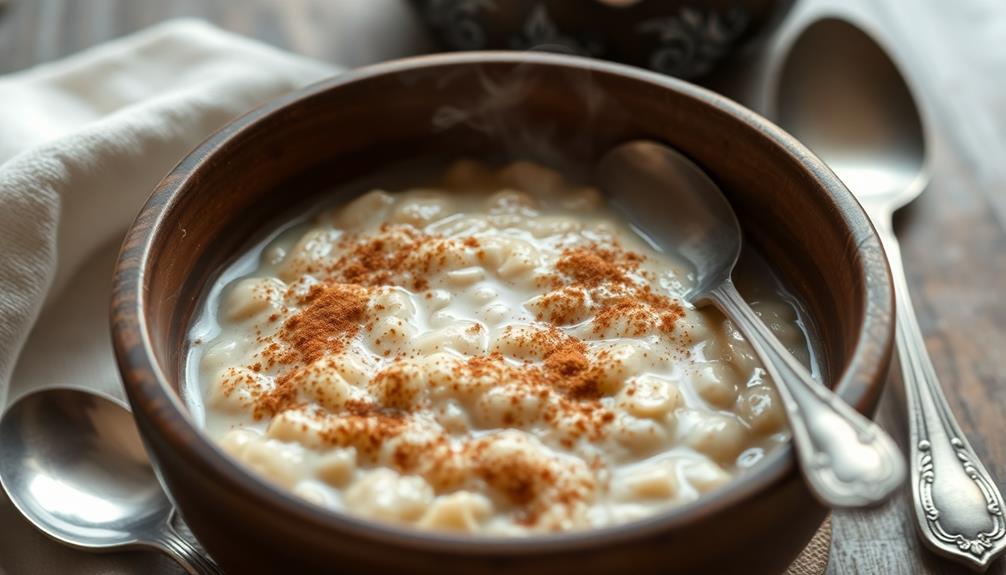
Though the origins of oatmeal can be traced back thousands of years, its modern incarnation as a creamy, comforting breakfast staple has evolved over time. Ancient Greeks and Romans were among the first to cultivate and consume oats, seeing them as a nutritious grain with various health benefits.
Over the centuries, oatmeal recipes and preparation methods were passed down through generations, with different cultures putting their unique spin on the dish. In the 19th century, the industrialization of food production led to the mass production of rolled oats, making oatmeal more accessible to the general public.
This, combined with the growing understanding of oats' fiber and nutrient content, contributed to oatmeal's rise in popularity as a wholesome breakfast choice. Today, oatmeal continues to be a beloved and versatile breakfast option, with countless variations and recipes available to suit diverse tastes and dietary needs.
Recipe
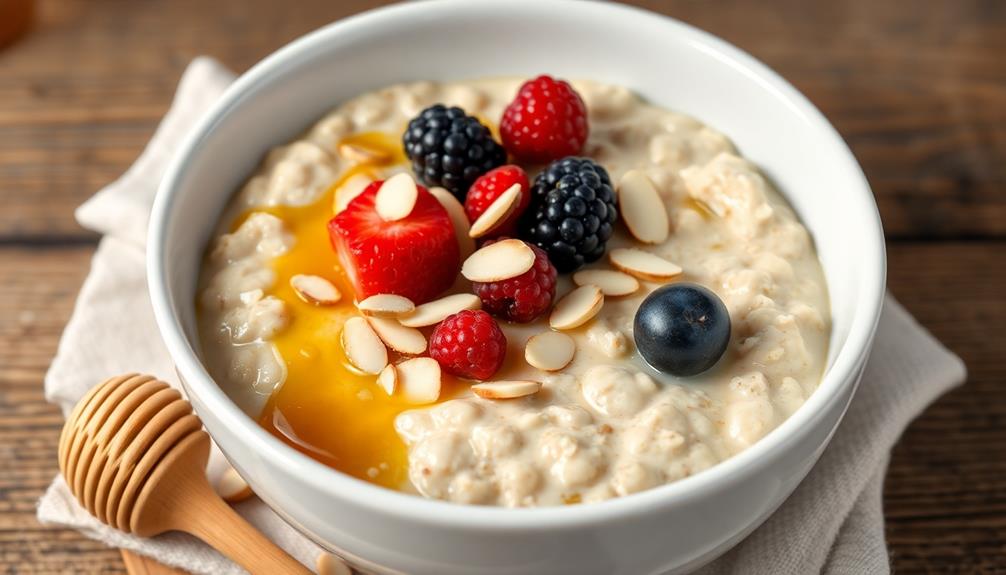
Creamy Homemade Oatmeal is a comforting and nourishing breakfast that can be easily prepared at home. This recipe produces a smooth, velvety texture that's sure to satisfy your morning cravings.
Oatmeal is a versatile and healthy grain that's packed with fiber, protein, and essential vitamins and minerals. By making it from scratch, you can control the ingredients and create a dish that suits your taste preferences.
- 1 cup old-fashioned rolled oats
- 2 cups milk (dairy, almond, or oat milk)
- 1/4 teaspoon salt
- 1 tablespoon brown sugar (or maple syrup)
- 1/2 teaspoon vanilla extract
In a medium saucepan, combine the rolled oats, milk, and salt. Bring the mixture to a boil over medium heat, stirring occasionally.
Once boiling, reduce the heat to low and let the oatmeal simmer for 5-7 minutes, stirring frequently, until it reaches the desired creamy consistency.
Remove the saucepan from the heat and stir in the brown sugar (or maple syrup) and vanilla extract.
Serve the creamy homemade oatmeal warm, and consider adding your favorite toppings such as fresh fruit, nuts, or a drizzle of nut butter.
Cooking Steps
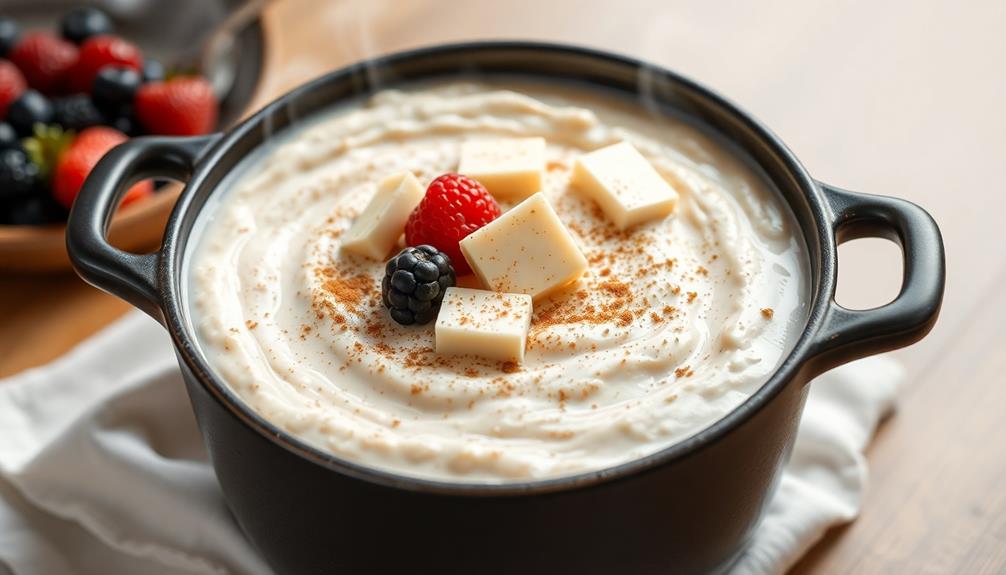
Bring a pot of water and a pinch of salt to a boil over medium-high heat.
Once boiling, stir in the oats and cook, stirring periodically, for about 5-7 minutes until the oats are tender and the mixture is creamy.
Step 1. Bring Water and Salt to Boil
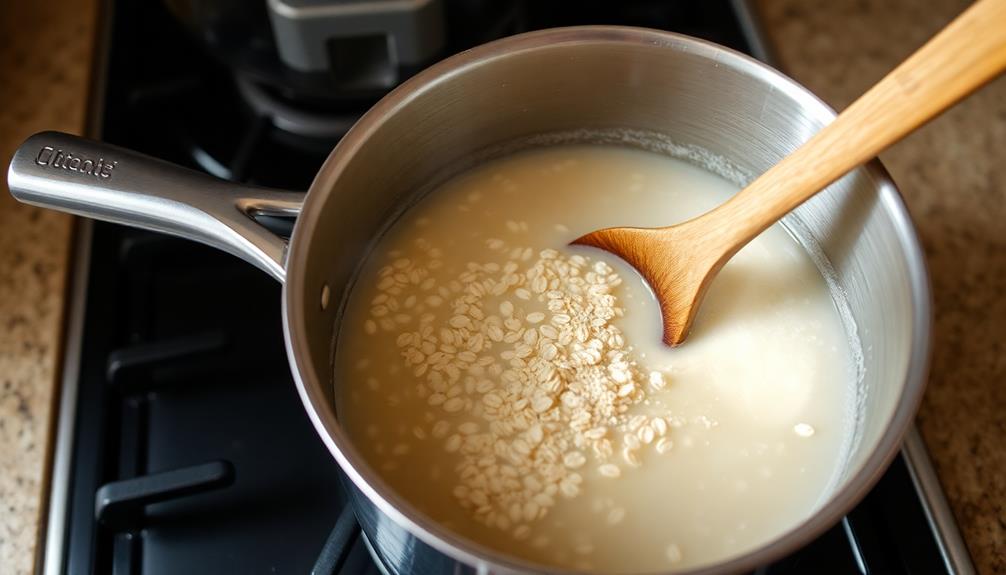
To start the cooking process, bring a medium-sized saucepan filled with the specified amount of water to a boil over high heat.
Once the water is at a rolling boil, add a pinch of salt to the pan. The salt will help to enhance the flavor of the oats and provide a well-rounded taste to the final dish.
It's important to use the correct water-to-oats ratio for optimal texture and creaminess. The standard ratio is typically 2 cups of water for every 1 cup of oats. However, you can adjust this ratio to suit your personal preferences, using more water for a softer, creamier oatmeal or less water for a thicker, chewier consistency.
Bringing the water to a full boil is crucial, as this ensures that the oats will cook evenly and absorb the liquid efficiently.
Keep a close eye on the pan, and once the water is at a rolling boil, you're ready to add the oats and continue with the next step of the cooking process.
Step 2. Add Oats and Cook
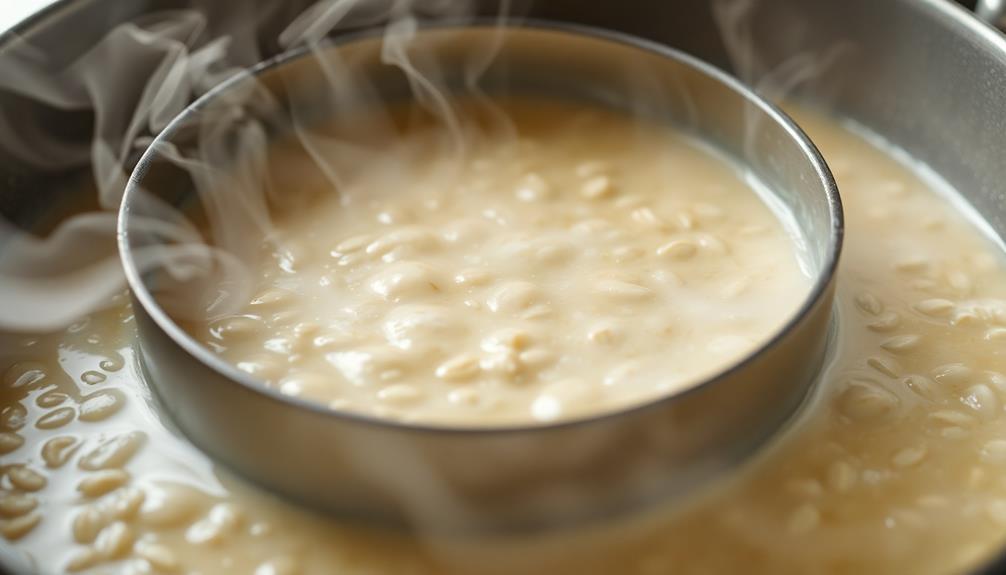
Once the water is boiling, add the oats to the pan. Stir the oats constantly for the first minute to prevent them from sticking or clumping. This initial stirring helps the oats cook evenly and develop a creamy texture.
After the first minute, reduce the heat to medium-low and let the oats simmer. Continue stirring occasionally, allowing the oats to gradually absorb the liquid.
Depending on the type of oats you're using, the cooking time may vary:
- Old-fashioned oats typically take 5-7 minutes to reach the desired creamy consistency.
- Quick oats generally cook in 2-3 minutes.
- Steel-cut oats require 15-20 minutes of simmering to become tender and creamy.
As the oats cook, you may need to add a splash of extra water or milk if the mixture becomes too thick. The goal is to achieve a smooth, porridge-like texture.
Once the oats have reached your preferred consistency, remove the pan from the heat and proceed to the next step.
Step 3. Stir Oats Periodically During Cooking
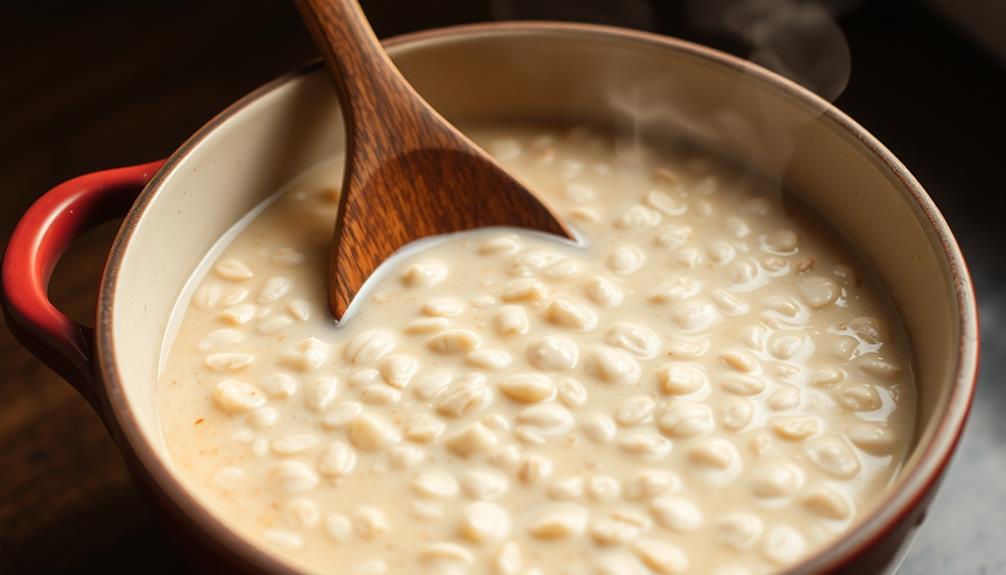
As the oats simmer, stir them periodically to prevent sticking and ensure even cooking. This simple action helps maintain the creamy texture you're aiming for.
Stir the pot gently, using a wooden spoon or heat-safe spatula, making sure to scrape the bottom and sides. Doing this every 2-3 minutes will keep the oats from clumping together or scorching on the bottom of the pan.
Stirring also helps distribute the heat evenly, cooking the oats through without overcooking the edges. Pay close attention, as the oats can go from perfectly cooked to mushy if left unattended for too long.
Adjust the heat as needed to maintain a gentle simmer. Consistent, attentive stirring is the key to achieving that wonderfully creamy, smooth oatmeal you crave.
Don't be tempted to walk away – staying present and tending to the pot will yield the best results.
Step 4. Add Desired Toppings
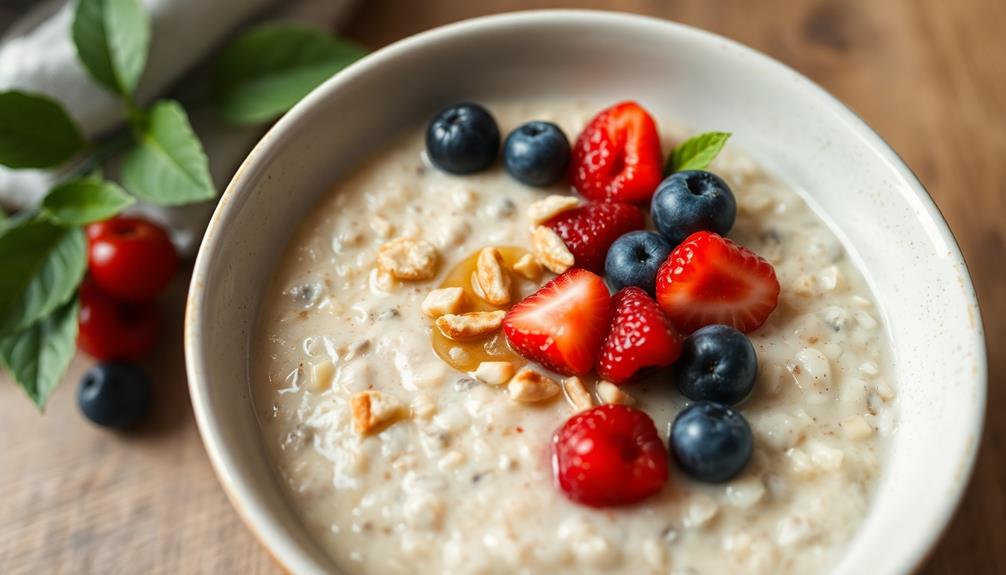
Now that you've achieved that perfectly creamy texture by stirring the oats, it's time to add your desired toppings.
The beauty of homemade oatmeal is the ability to customize it to your liking. Consider adding fresh fruit such as sliced bananas, diced apples, or a handful of berries for a boost of vitamins and antioxidants rich in vitamins A and C. These add a delightful sweetness and texture contrast.
If you're craving a little crunch, try sprinkling on some chopped nuts like almonds, walnuts, or pecans. For an extra indulgent touch, a drizzle of honey, maple syrup, or nut butter can elevate the flavor.
Don't forget about spices – a dash of cinnamon, nutmeg, or vanilla extract can take your oatmeal to new heights.
If you're feeling adventurous, try mixing in shredded coconut, chia seeds, or a sprinkle of granola. The possibilities are endless, so have fun experimenting to find your perfect oatmeal combination.
Step 5. Remove From Heat
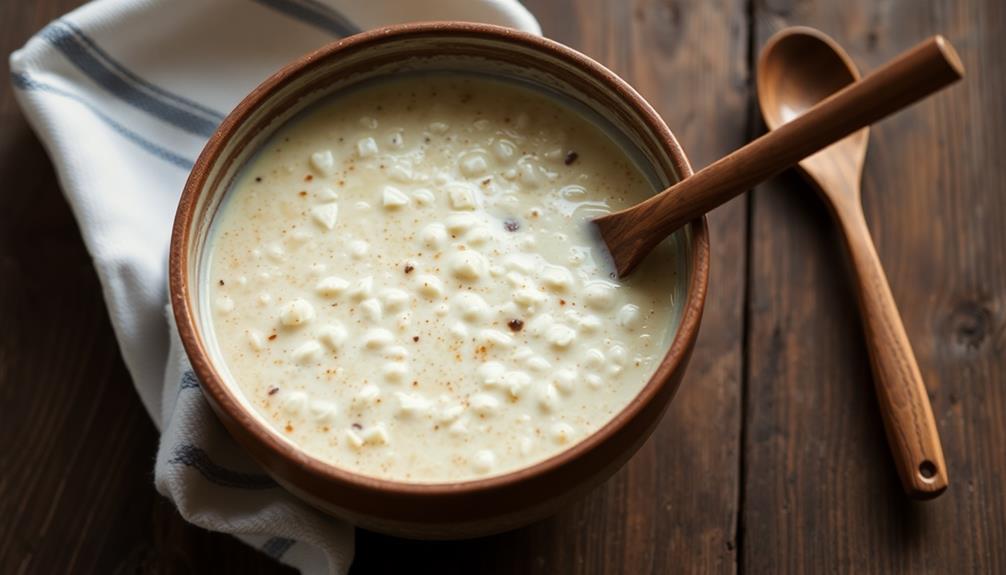
After you've added your desired toppings, it's time to remove the pot from the heat. This is a crucial step in ensuring your oatmeal reaches the perfect consistency.
Carefully grasp the handle of the pot and lift it off the burner, being mindful of any residual steam or heat. Once the pot is safely away from the heat source, give the oatmeal a final stir to incorporate any remaining toppings or ingredients.
The removal of the pot from the heat allows the oatmeal to continue thickening and developing its creamy texture without overcooking. This step prevents the oats from becoming too mushy or gloppy, ensuring a delightful, spoonable consistency.
Allow the oatmeal to sit for a minute or two, giving it time to reach your desired thickness before serving. This simple yet essential step is the final touch that transforms your homemade oatmeal into a comforting, satisfying meal.
Final Thoughts
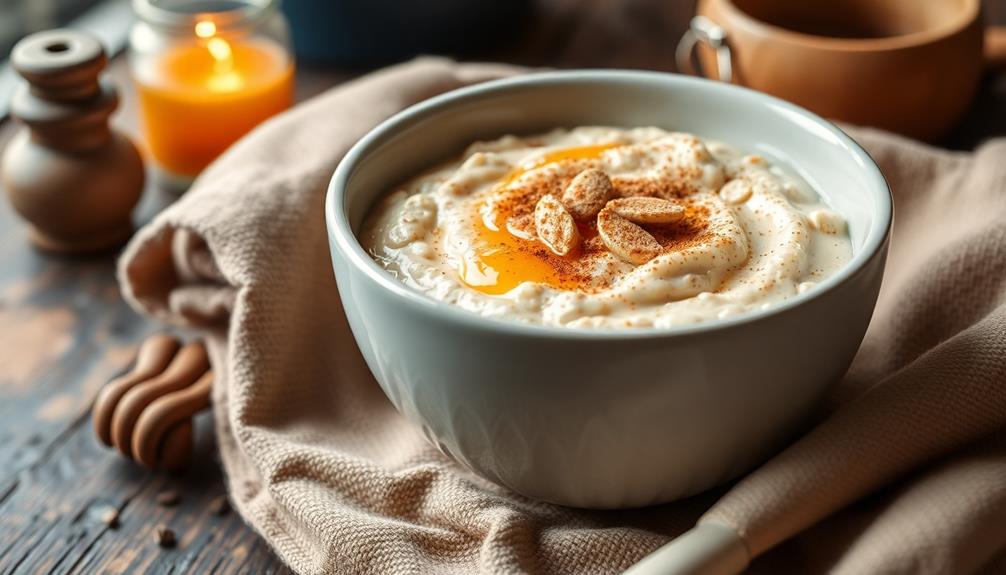
With a satisfying and nutritious breakfast like this creamy homemade oatmeal recipe, you'll be well on your way to a productive day. The final thoughts on this delightful dish are sure to leave you feeling confident and eager to recreate it in your own kitchen.
Incorporating a variety of flavors can also enhance your mood and well-being, much like how aromatherapy can promote relaxation and reduce stress.
One of the best things about this recipe is its versatility. You can easily customize the toppings and mix-ins to suit your personal preferences, making it a go-to breakfast option that never gets old. Whether you prefer a classic combination of cheese and vegetables or something more adventurous like smoked salmon and fresh herbs, the possibilities are endless. This flexibility makes it the perfect omelette recipe for breakfast, offering something different every time while still being simple to prepare. Plus, it’s a great way to use up any leftover ingredients in your fridge! You can also experiment with different types of cheese or add a protein boost with cooked chicken, ham, or bacon, easily adapting it to suit your dietary needs. No matter how you choose to tailor it, this recipe consistently delivers the **perfect omelette for breakfast**—delicious, filling, and incredibly satisfying. Best of all, it’s quick to whip up even on busy mornings, making it a reliable option for a healthy start to your day. You can also make it more indulgent by adding creamy avocado or a dollop of sour cream for extra richness, or keep it light with a sprinkle of fresh greens like arugula or spinach. The beauty of this dish lies in its ability to cater to any craving, whether you’re in the mood for something hearty or refreshing. No matter the variation you choose, this truly remains the perfect omelette recipe for breakfast, meeting all your needs for taste, nutrition, and convenience.
Whether you prefer a touch of sweetness from fresh fruit or a savory twist with sautéed veggies, the possibilities are endless.
Additionally, the creamy texture of this oatmeal is sure to leave you feeling full and satisfied, thanks to the hearty oats and the rich, indulgent dairy ingredients.
And with the added benefits of fiber, protein, and essential nutrients, you can feel good about starting your day with this nourishing meal.
Frequently Asked Questions
Can I Use Steel-Cut Oats Instead of Rolled Oats?
You can absolutely use steel-cut oats instead of rolled oats. They'll take a bit longer to cook, but they'll give your oatmeal a chewier, nuttier texture. Just adjust the cooking time accordingly.
How Can I Make My Oatmeal Thicker or Creamier?
To make your oatmeal thicker or creamier, you can use more oats, cook them for longer, or add ingredients like milk, cream, or nut butters. Experiment with different techniques to find the consistency you prefer.
Is It Possible to Make Oatmeal in the Microwave?
Yes, you can make oatmeal in the microwave. Simply combine oats, milk or water, and any desired toppings in a microwave-safe bowl. Microwave in short bursts, stirring occasionally, until the oatmeal reaches your desired thickness and creaminess.
Can I Add Fruit or Nuts to the Oatmeal?
Absolutely! You can add a variety of fruits, nuts, and other toppings to your oatmeal to enhance the flavor and texture. Try stirring in sliced bananas, blueberries, or a sprinkle of chopped walnuts for a delicious and nutritious breakfast.
How Long Does Homemade Oatmeal Last in the Fridge?
Homemade oatmeal can last 3-5 days in the fridge when stored in an airtight container. The exact shelf life depends on the ingredients used, but you'll generally want to consume it within a week for best quality and food safety.
